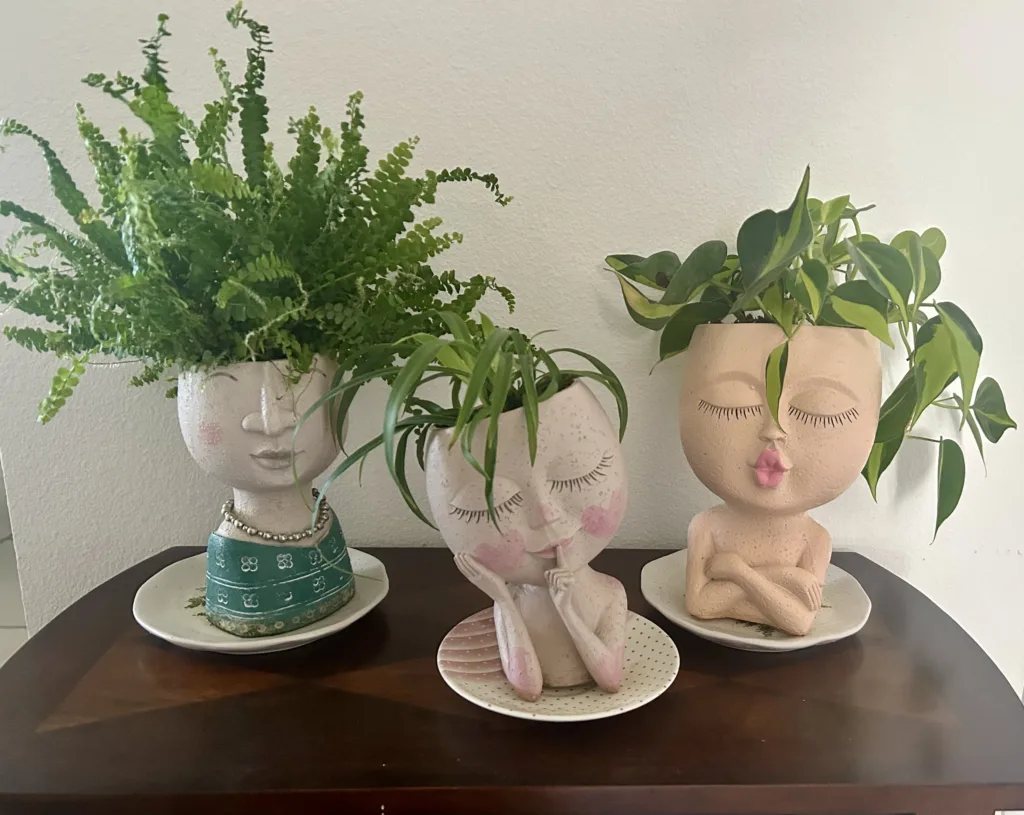
Plant head planters are trendy and unique containers that add personality to any space. From whimsical to sophisticated designs, these planters are perfect for housing small plants that add a touch of greenery and creativity. This guide will walk you through some of the best plants to use in head planters, including Easter cactus, airplane plants, succulents, string of pearls, air plants, and more. You’ll learn what makes each plant ideal and get practical tips on planting and care for each type. I have multiple pot head planters throughout my home with everything from miniature African Violets, miniature ferns, airplane plants, pothos, cactus, succulents, air plants and more. My collection is ever growing, the talk of everyone who comes into my home and can’t wait to purchase my next one. Check out a few of them by clicking here and here and even here!!
Choosing the Right Plants for Your Pot Head Planter
Not all plants thrive in head planters, so choosing varieties that suit this container style is essential. Most head planters don’t have much space for root systems, which means small, shallow-rooted plants work best. Succulents, cacti, and trailing plants with limited water and soil requirements are ideal choices. Let’s dive into the best options!
Easter Cactus (Hatiora gaertneri)
Easter cactus is a unique, low-maintenance option that blooms around the Easter season, producing beautiful flowers in shades of pink, red, and white. Its compact growth makes it an excellent choice for head planters, where you want a pop of color without a large footprint.
- Soil and Planting: Use a cactus potting mix that allows for good drainage. Plant it in the upper part of the planter’s head to give its flowers a crown-like appearance when in bloom.
- Light and Water: Place your planter in a spot that gets indirect sunlight, as too much direct sunlight can scorch the leaves. Water it sparingly, allowing the soil to dry out between watering.
Airplane Plant (Chlorophytum comosum)
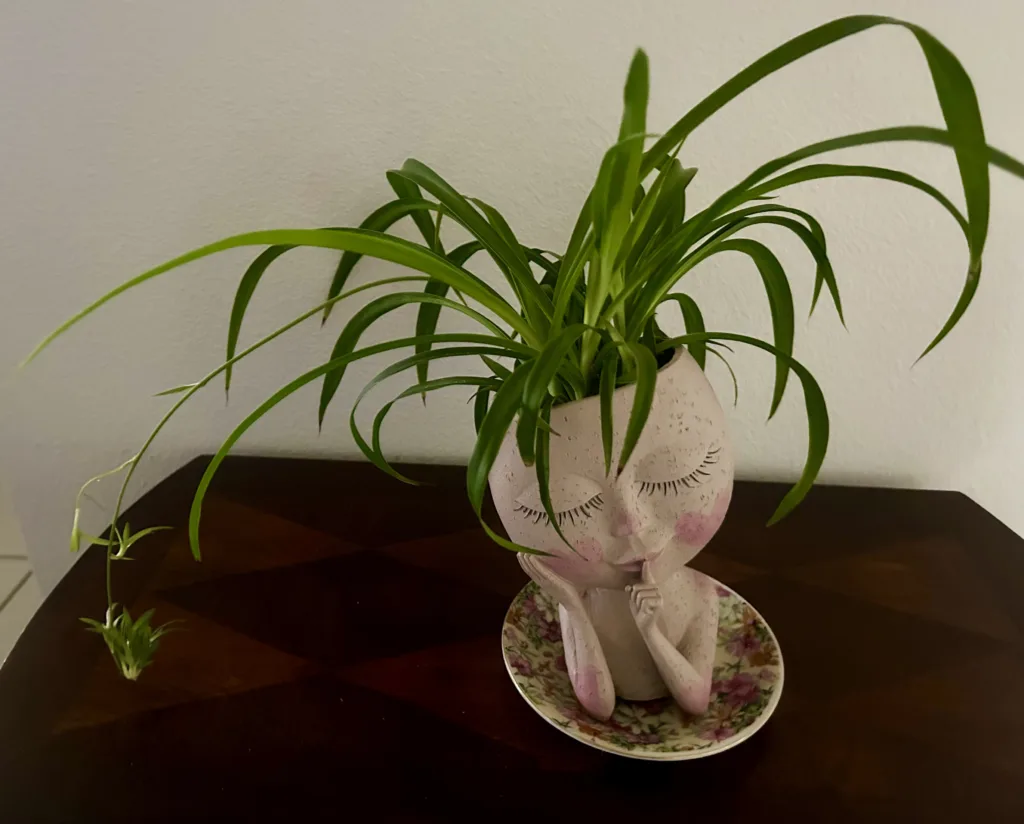
The airplane plant, or spider plant, is another excellent choice for head planters. Its long, arching leaves spill over the edges, creating a lively hairstyle effect that adds character to your planter. You can get this planter here along with allot of other pot head planters!
- Soil and Planting: Use a general-purpose potting mix that retains moisture but drains well. Since airplane plants are resilient and adaptable, they won’t mind the small soil volume in a head planter.
- Light and Water: They thrive in bright, indirect light but can tolerate lower light levels. Water moderately, keeping the soil consistently moist but never soggy.
Succulents
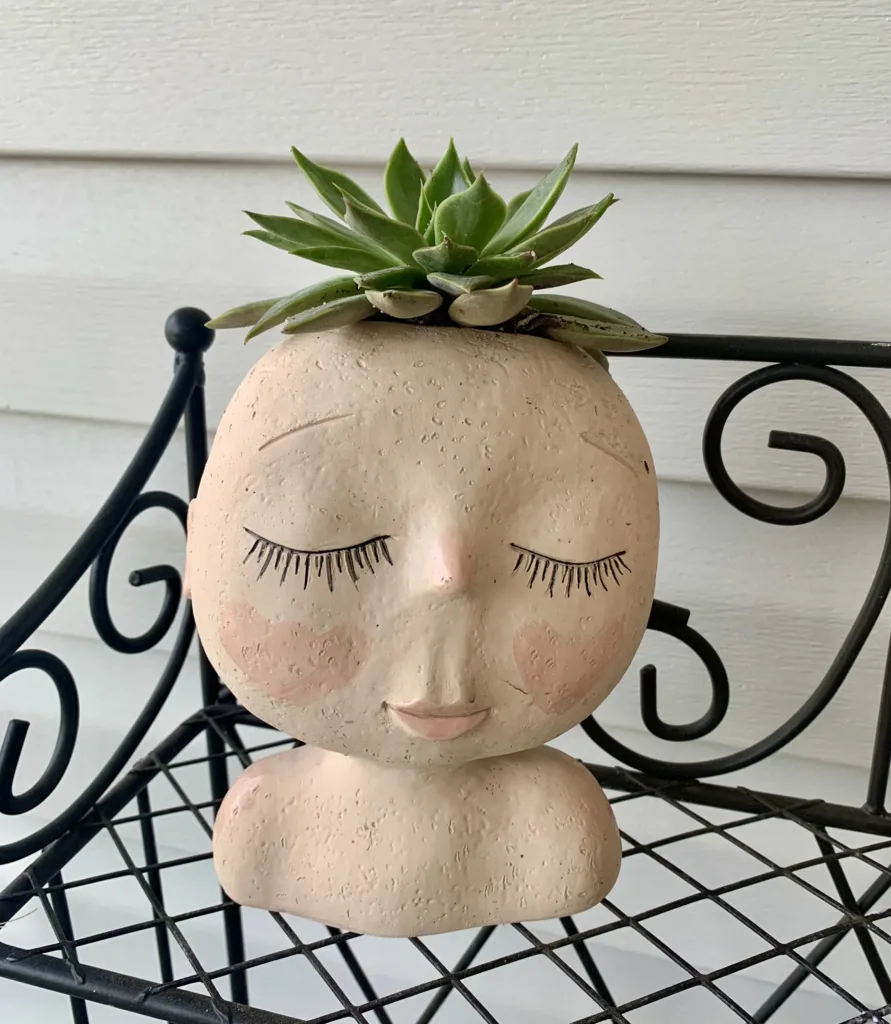
Succulents are perfect for head planters due to their shallow roots and need for minimal watering. With their diverse shapes, colors, and textures, succulents let you customize each planter for a unique look. I have two of these, the other one has a large air plant. You can just click here to purchase this planter.
- Soil and Planting: Choose a cactus or succulent potting mix to provide excellent drainage. Arrange a mix of varieties, like echeveria and haworthia, for a dynamic look.
- Light and Water: Place your succulent-filled head planter in bright, indirect sunlight. Water only when the soil is dry, as overwatering can lead to root rot.
String of Pearls (Senecio rowleyanus)
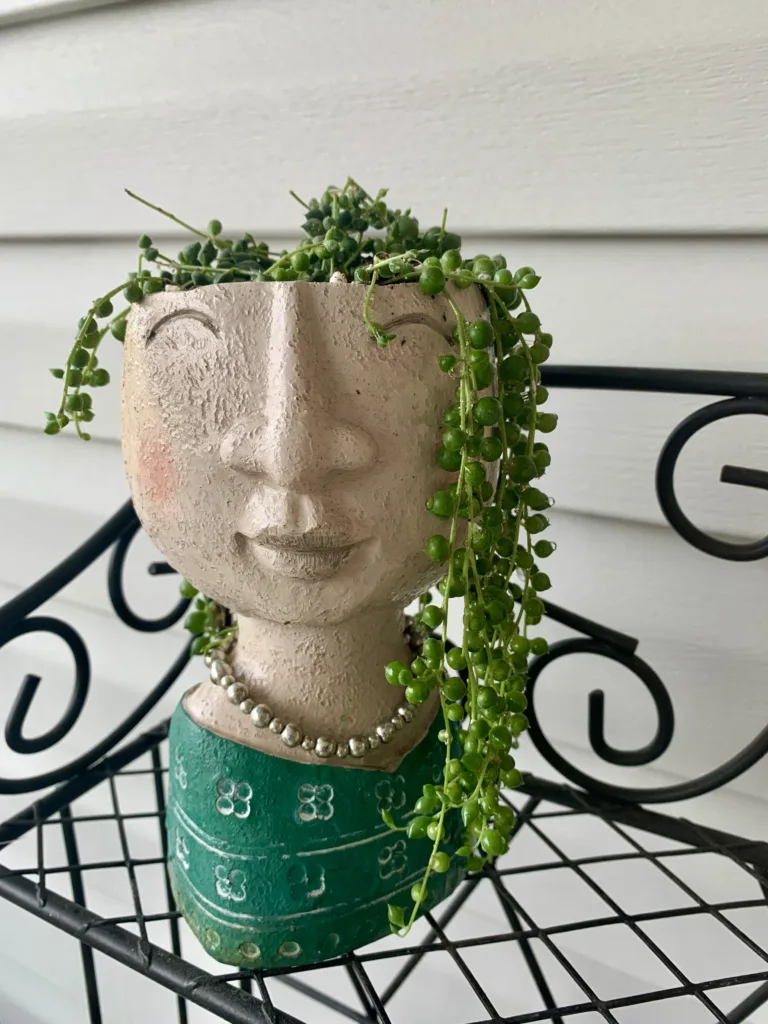
The string of pearls is a trailing succulent that creates an eye-catching, draped effect. It looks especially stunning in head planters, resembling long, flowing hair. This head planter can also work with string of turtles, string of dolphins and string of frogs.
- Soil and Planting: Use a cactus potting mix and plant the string of pearls near the edges of the planter, so its tendrils cascade down.
- Light and Water: This succulent loves bright, indirect sunlight and does well with minimal watering. Let the soil dry out completely between watering sessions to avoid rot.
Air Plants (Tillandsia)
Air plants don’t need soil to grow, making them one of the most flexible options for head planters. They can sit in any part of the planter, and you can easily remove them for watering.
- Soil and Planting: No soil needed! Simply place your air plant in a spot where it fits comfortably. You can even tuck them into decorative spots around the planter’s head for a playful look.
- Light and Water: Air plants need bright, indirect light. To water, remove the plant and soak it in water for about 30 minutes once a week, then shake off the excess water before placing it back in the planter.
Pothos (Epipremnum aureum)
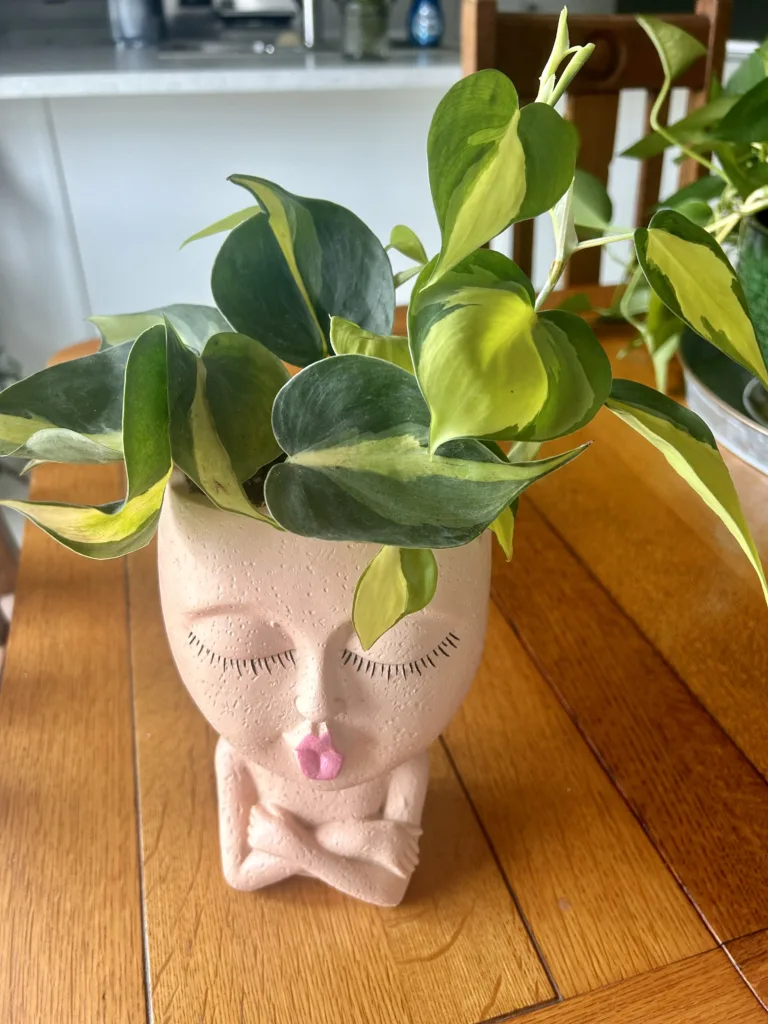
Pothos plants are excellent for head planters because of their adaptability and beautiful trailing vines. They’re resilient, forgiving, and look fantastic spilling out of the planter as if forming a head of flowing hair. Check out this face head planter similar to this one on the right.
- Soil and Planting: Use a standard indoor potting mix and plant your pothos slightly toward the edge of the planter for a draped effect.
- Light and Water: They grow best in bright, indirect light but can tolerate low-light conditions. Water them when the top inch of soil feels dry to the touch.
Miniature African Violets
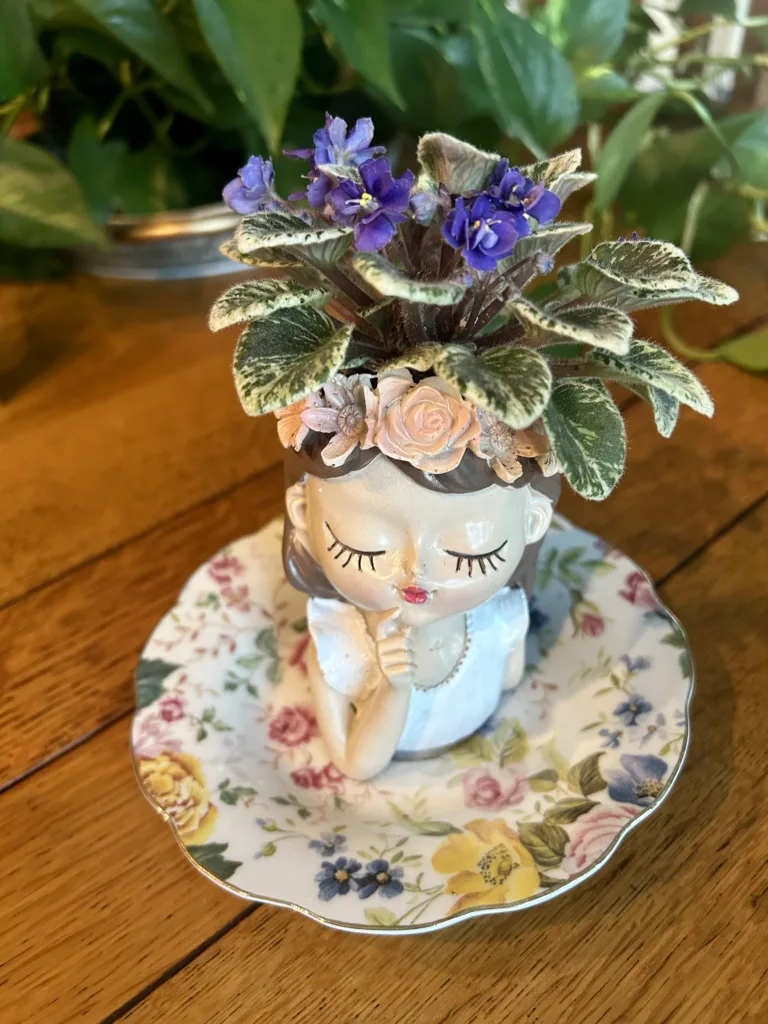
African violets prefer rich, well-draining soil, which keeps their roots from sitting in water. Opt for a special African violet potting mix or add perlite to regular potting soil for better drainage. Love my miniature African Violets planted in these adorable mini pot head planters.
- Planting: Use a shallow head planter with a wide opening. This will provide enough room for the violet’s roots to spread and allow air to circulate around the plant.
- Drainage: Ensure your planter has drainage holes to prevent root rot. If your planter lacks drainage, add a layer of small pebbles or stones at the bottom.
- Positioning: African violets do well with indirect sunlight. Place your head planter near a bright window where it can get indirect light throughout the day, avoiding direct sun.
Miniature Ferns
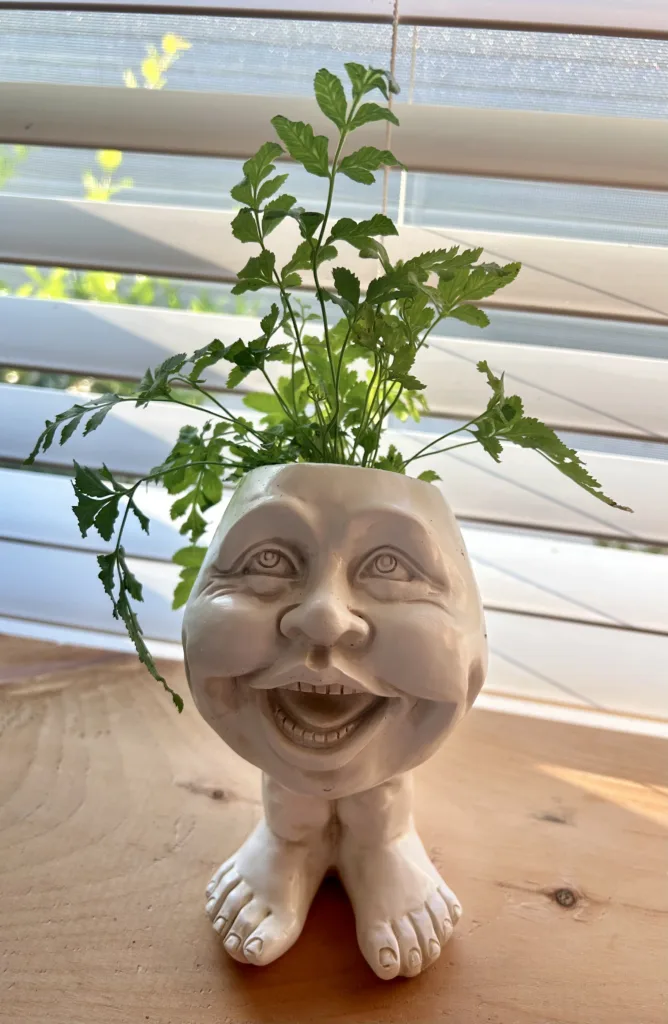
Miniature ferns, such as button ferns, can create a lovely “hair” effect for your head planter. These ferns have delicate, soft fronds that add texture and a bit of wild beauty.
- Soil and Planting: Use a mix that retains moisture, such as a potting mix for ferns. Plant the fern in a way that allows the fronds to spread outward.
- Light and Water: Ferns prefer indirect light and high humidity. Keep the soil consistently moist without letting it get soggy.
Tips for Successful Head Planter Gardening
Love my old man planter and just click here to purchase. I also have a second one with an Easter Cactus in it-been growing in it perfectly for the last year!
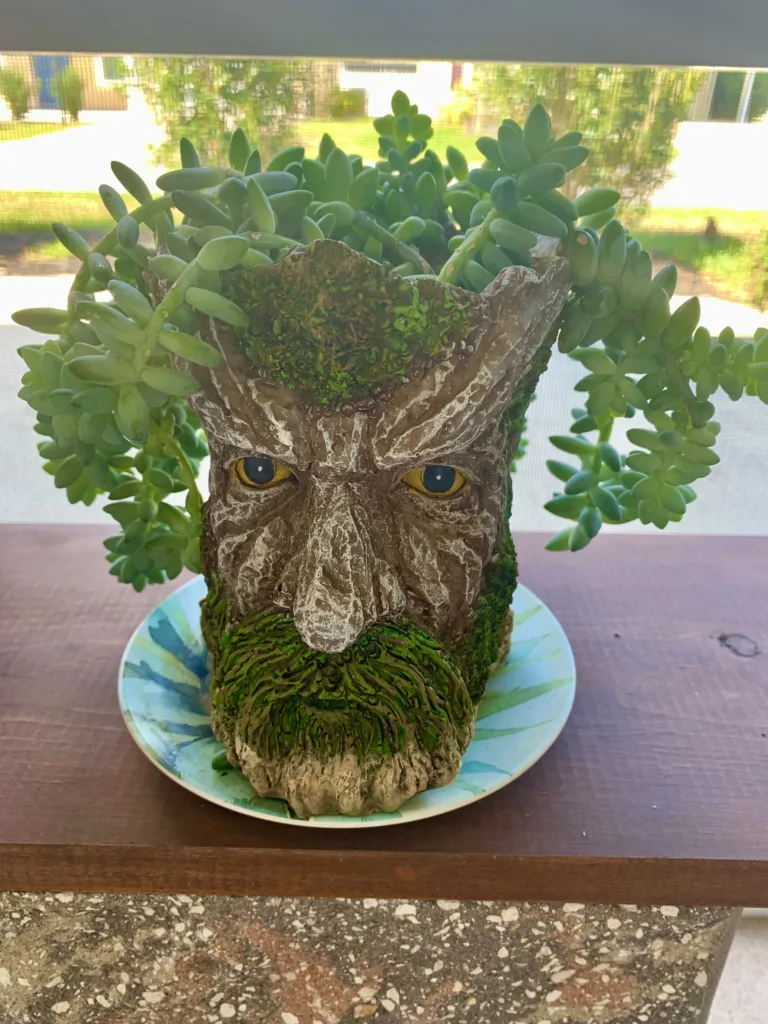
- Drainage: Ensure your head planter has drainage holes. If it doesn’t, consider drilling a small hole or using a layer of pebbles at the bottom to prevent water from sitting in the soil.
- Regular Maintenance: Plants in small containers require regular pruning to maintain their shape and keep them healthy. Trim any dead leaves or spent flowers to keep your planter looking fresh.
- Seasonal Adjustments: Move your planter to different locations depending on the season. For example, place it in a well-lit spot during winter when sunlight is limited, and consider a shadier spot in summer if the sun is too intense.
Styling Your Head Planter for Creative Impact
Consider styling your head planter with a theme. For example, plants like the string of pearls can create a vintage or bohemian look, while air plants can offer a minimalist vibe. Combining different plants in a single planter, such as succulents with a pothos, can also provide an eclectic look. Play with textures and colors to create a plant “hairstyle” that adds personality to your home.
Happy Pot Head Planters-Have Fun and Enjoy!
Head planters are a fun way to introduce greenery with a touch of personality. With the right plants, you’ll create a unique display that brings nature and creativity into your space. I think little guy on a swing is going to have to be my next purchase!
Please be sure to check out my Gardening Blog Post Page for more tips on all types of gardening. Including Seed Starting, Orchids, Water Gardening, Coldframe Gardening, Indoor Bulb Gardening, Hydroponics, Container Gardening, Mums, Herbs, African Violets, planting Bulbs, Flower Gardening, Vegetable and Fruit Gardening, Indoor Houseplants of all kinds, Cactus, Succulents, Hanging plants, Deer resistant plants and even Bird, Bee, Butterfly and Hummingbird Gardens!
